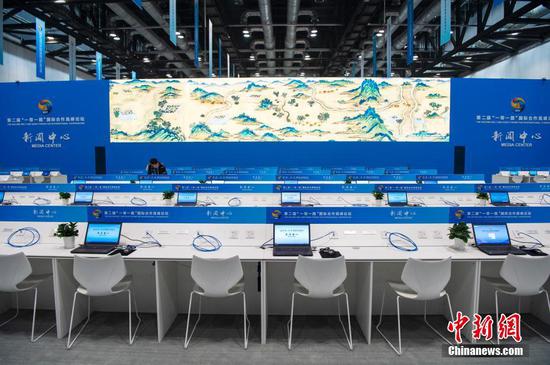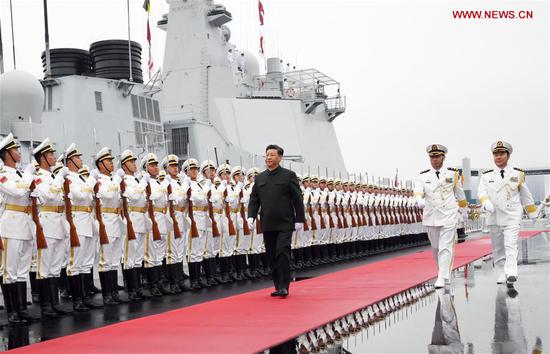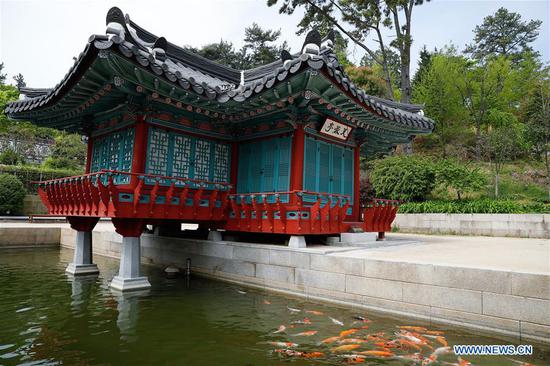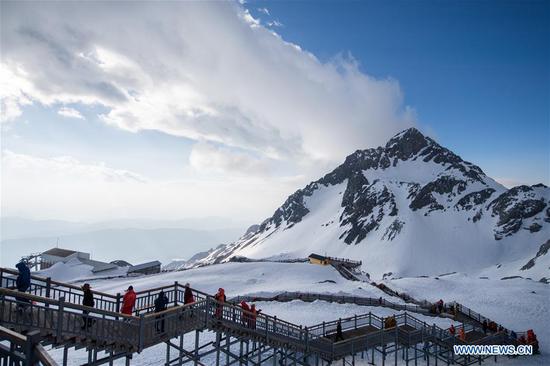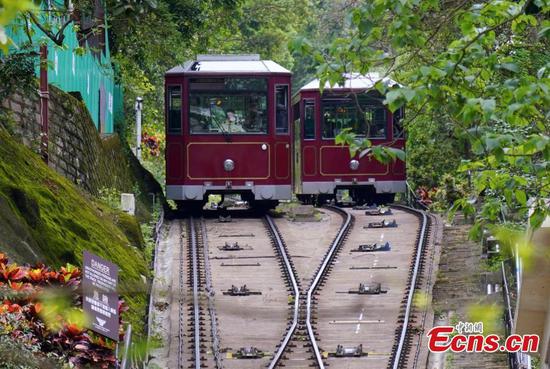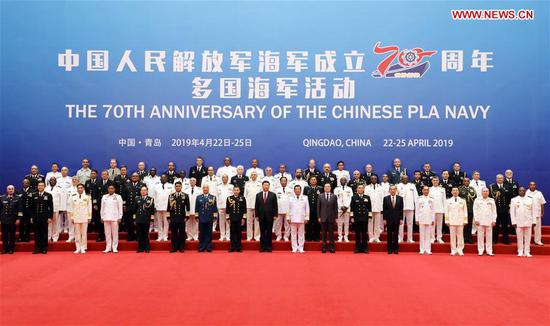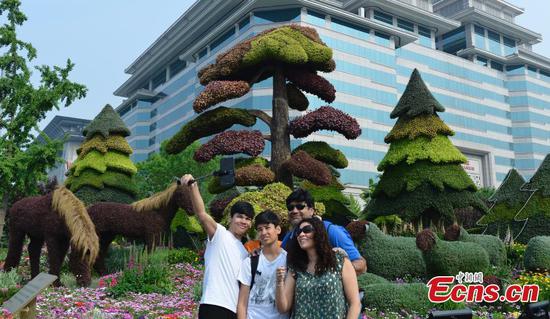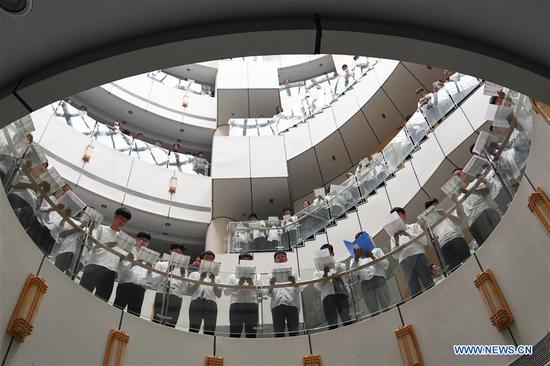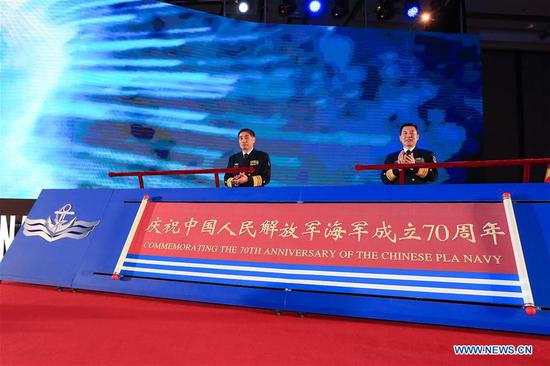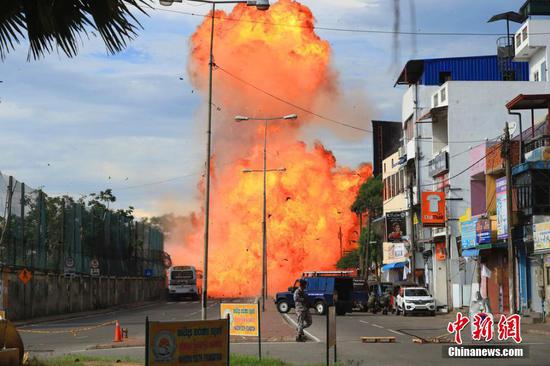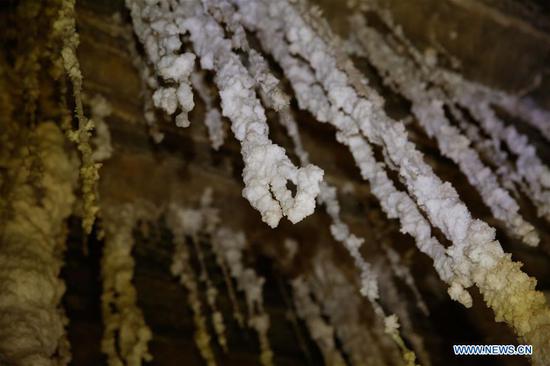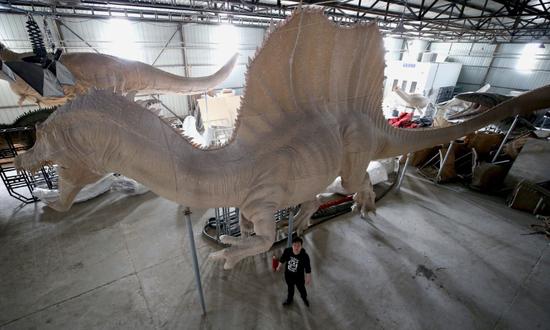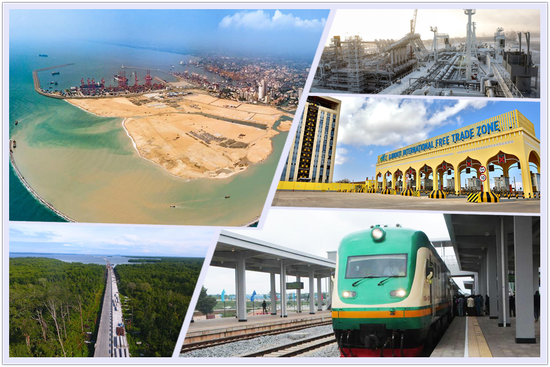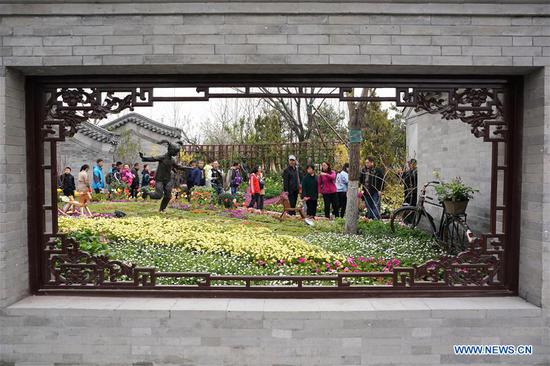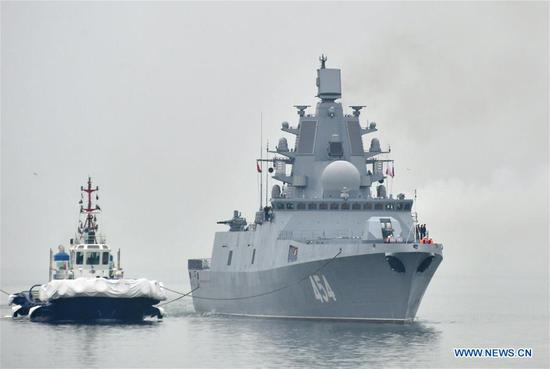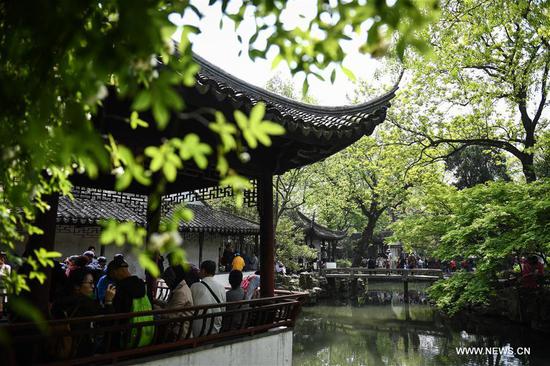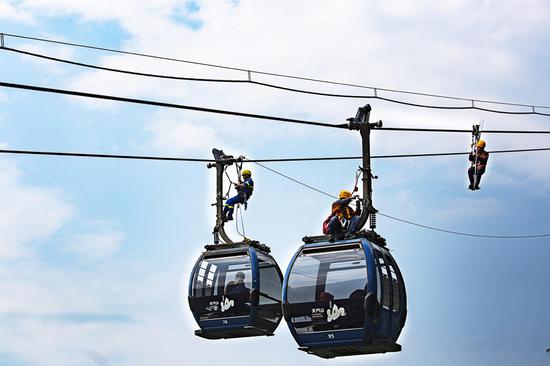
A high-speed train passes across Nantong city, Jiangsu province, on March 22, 2019. (Photo/Xinhua)
Advanced manufacturing industry and sci-tech innovation saw quick growth in Jiangsu province, with output of new energy vehicles jumping 100 percent in 2018. The province had 50 projects named National Technology Prize last year, the most in the country.
According to Zhang Zhaoan, vice-president of Shanghai Academy of Social Sciences, the Government Work Report of this year has raised the integration development of the Yangtze River Delta region to the level of national strategy, which will further promote the competitiveness of the region, People's Daily reported.
Seven other regions with the most economic competitiveness among the top 10 include Beijing, Zhejiang province, Shandong province, Tianjin, Fujian province, Chongqing, and Henan province.
Rankings of five provinces and cities rose in 2017 compared with that of 2016, including Shanxi province, Shaanxi province, Chongqing, Heilongjiang province, and Liaoning province, with Shanxi province jumping four places, the biggest rise.
Six regions, namely the Jilin province, Inner Mongolia autonomous region, Henan province, Guangxi Zhuang autonomous region, Guizhou province, and Ningxia Hui autonomous region, slipped in rankings.
According to the report, the economic performance of the 31 regions remained steady during the 2016 and 2017 period, without drastic ups and downs.
However, the economic competitiveness of 31 regions was far from even, as the Tibet autonomous region, with a comprehensive score of 22.5, was less than half of Guangdong province's score in 2017.
East China remained the most developed region in 2017, with a comprehensive evaluation score of 48.6. Central China, West China, and Northeast China scored 36.9, 31.7 and 34, respectively.
However, the economic competitiveness gap between West China and East China shrunk in 2017, indicating a booming economy in the western region.









